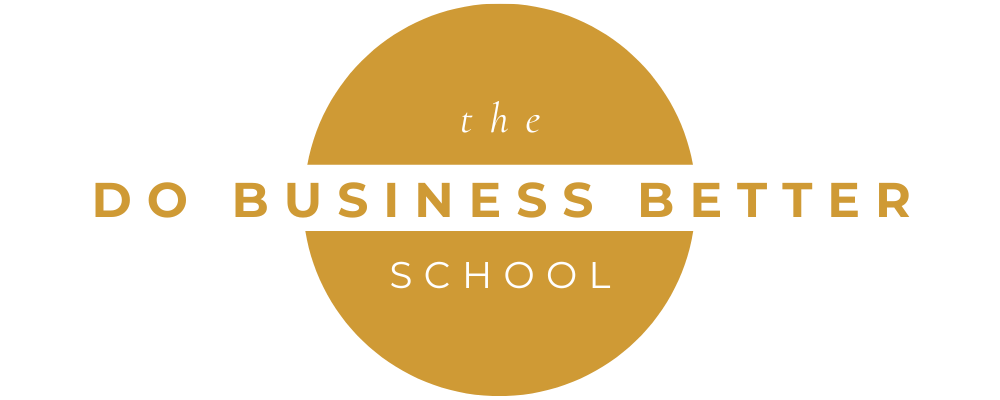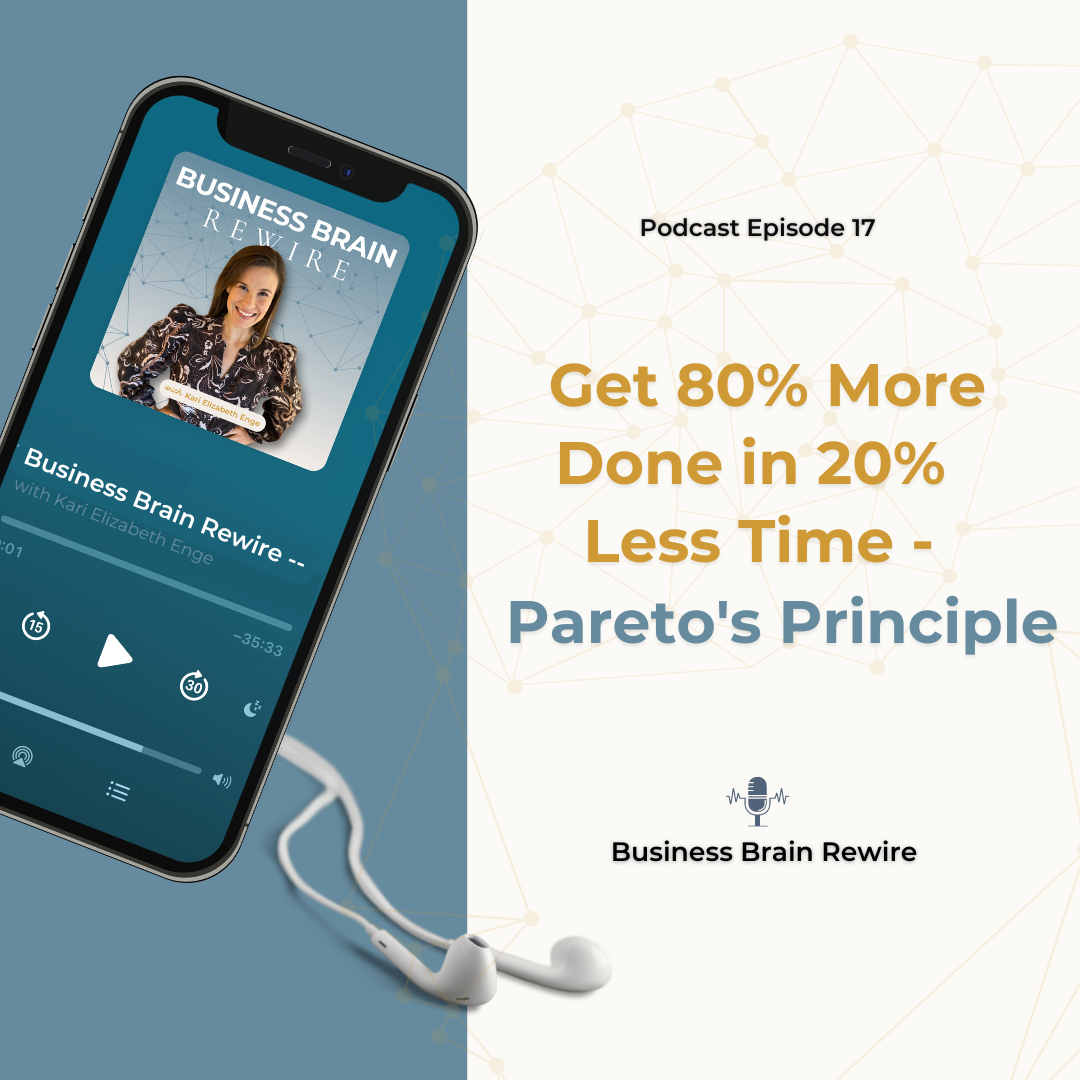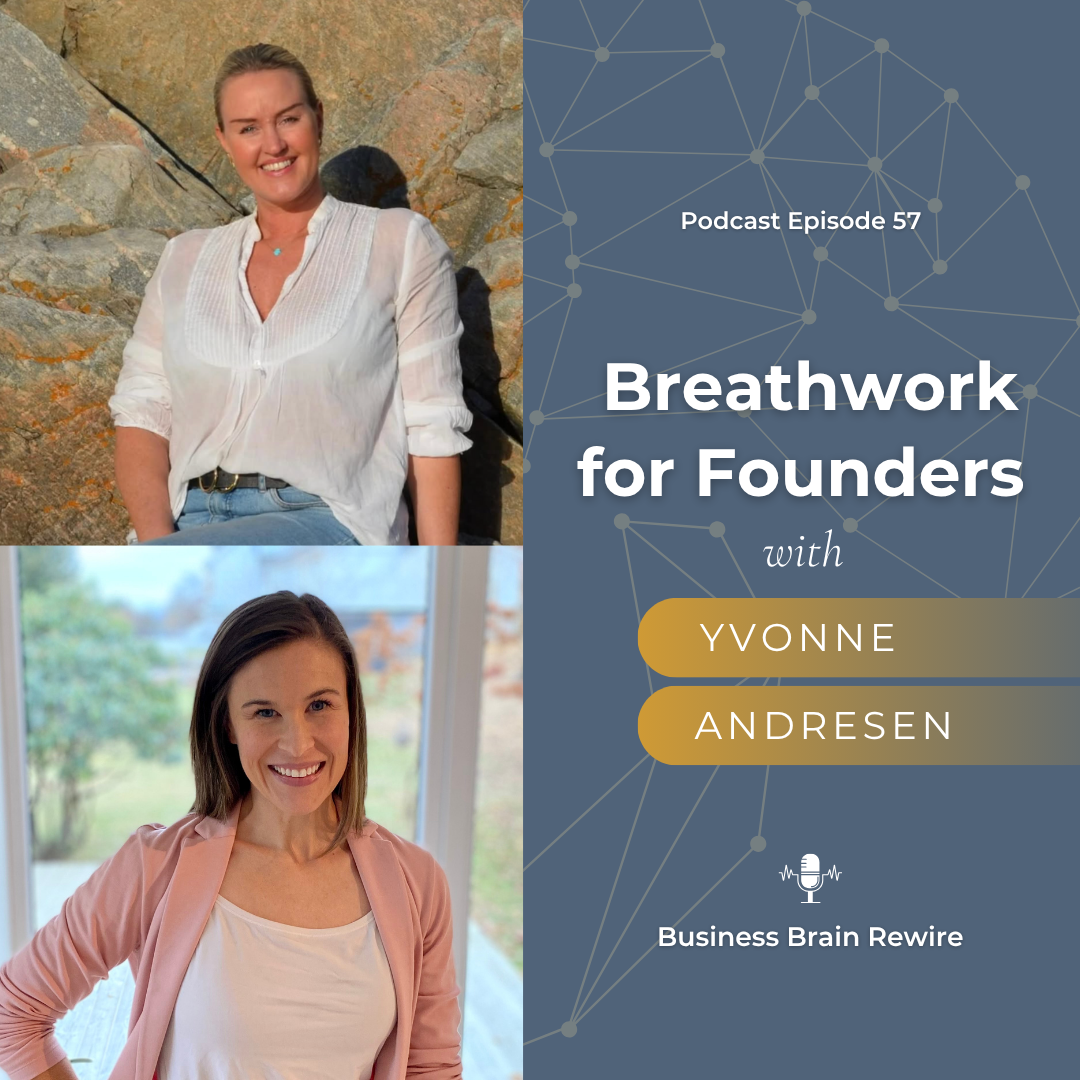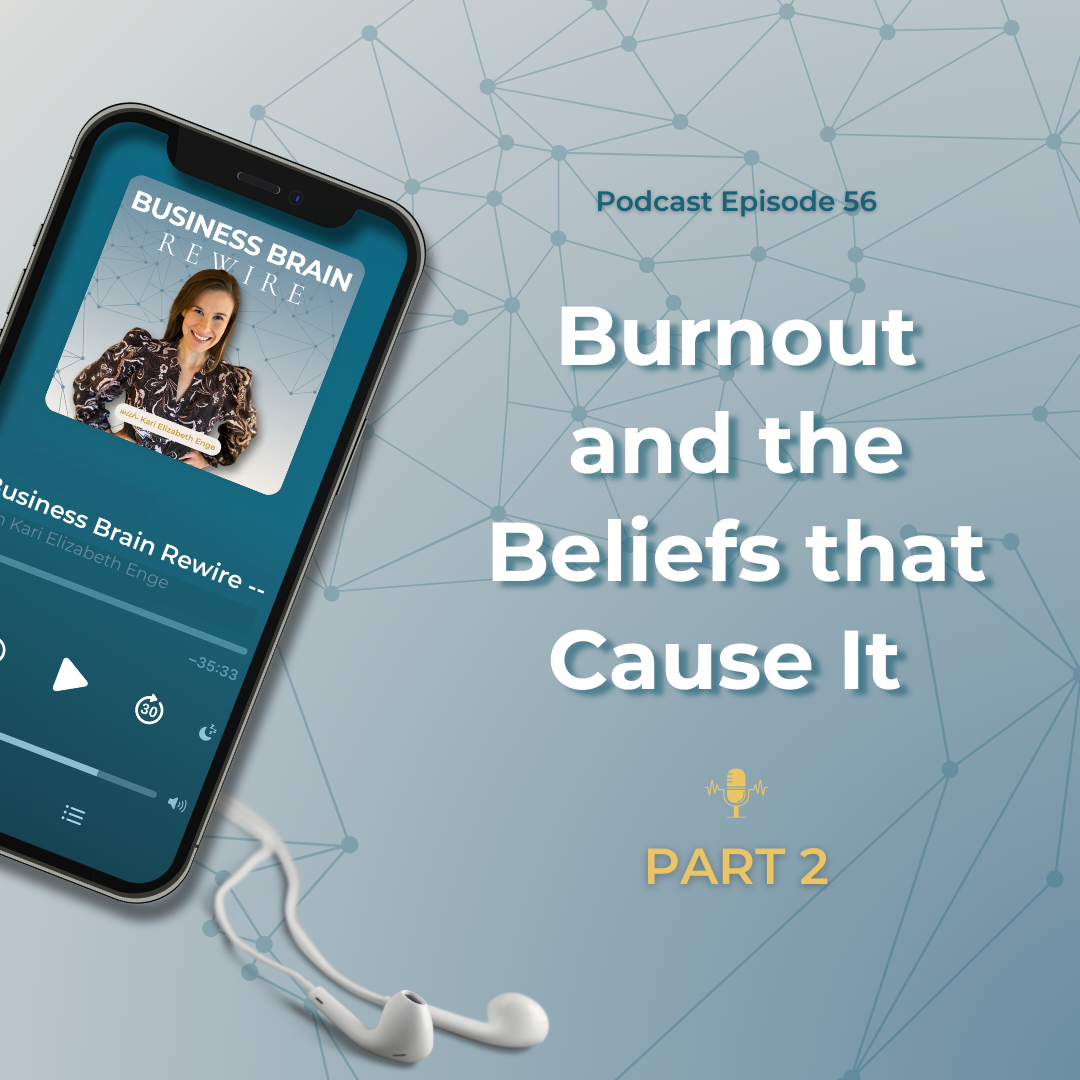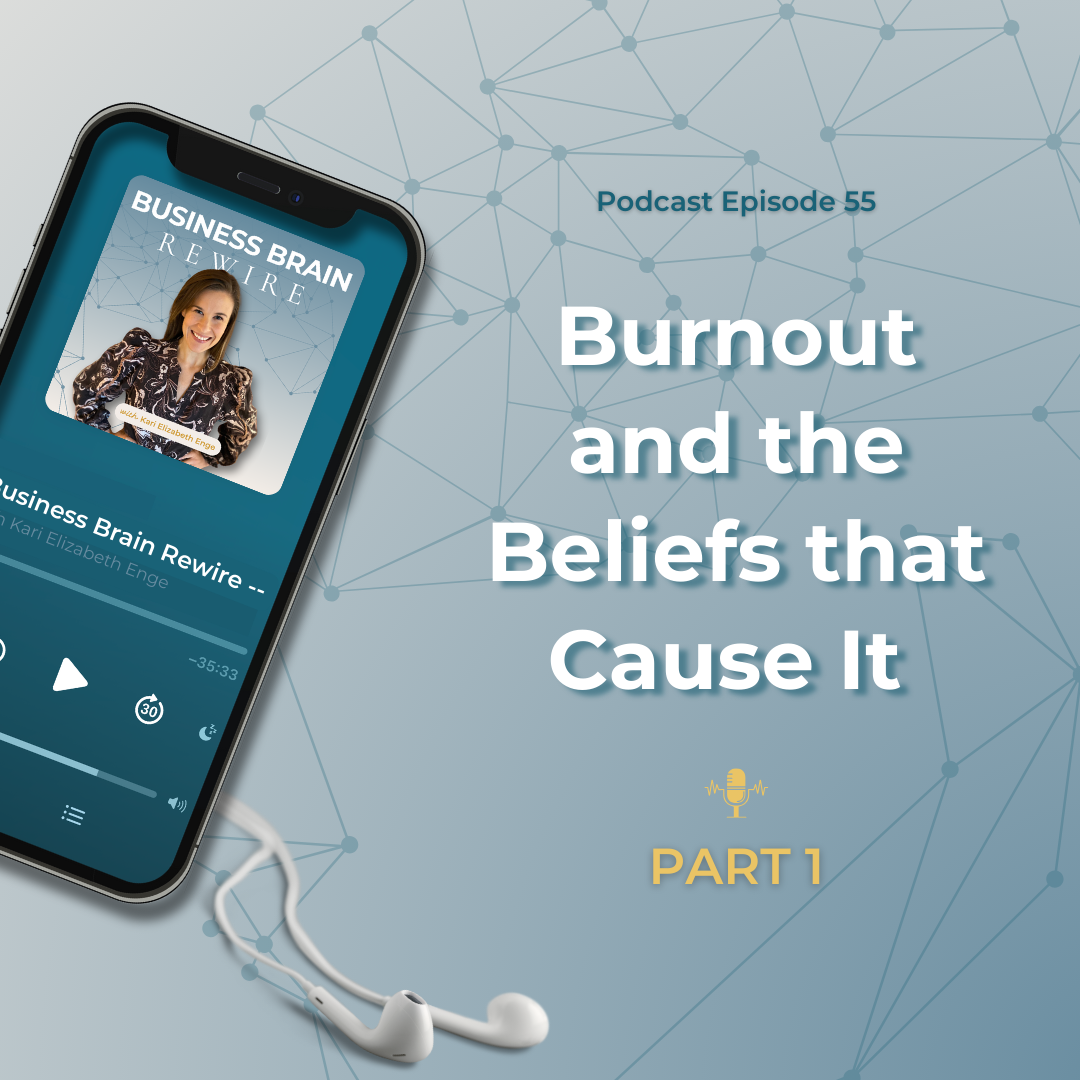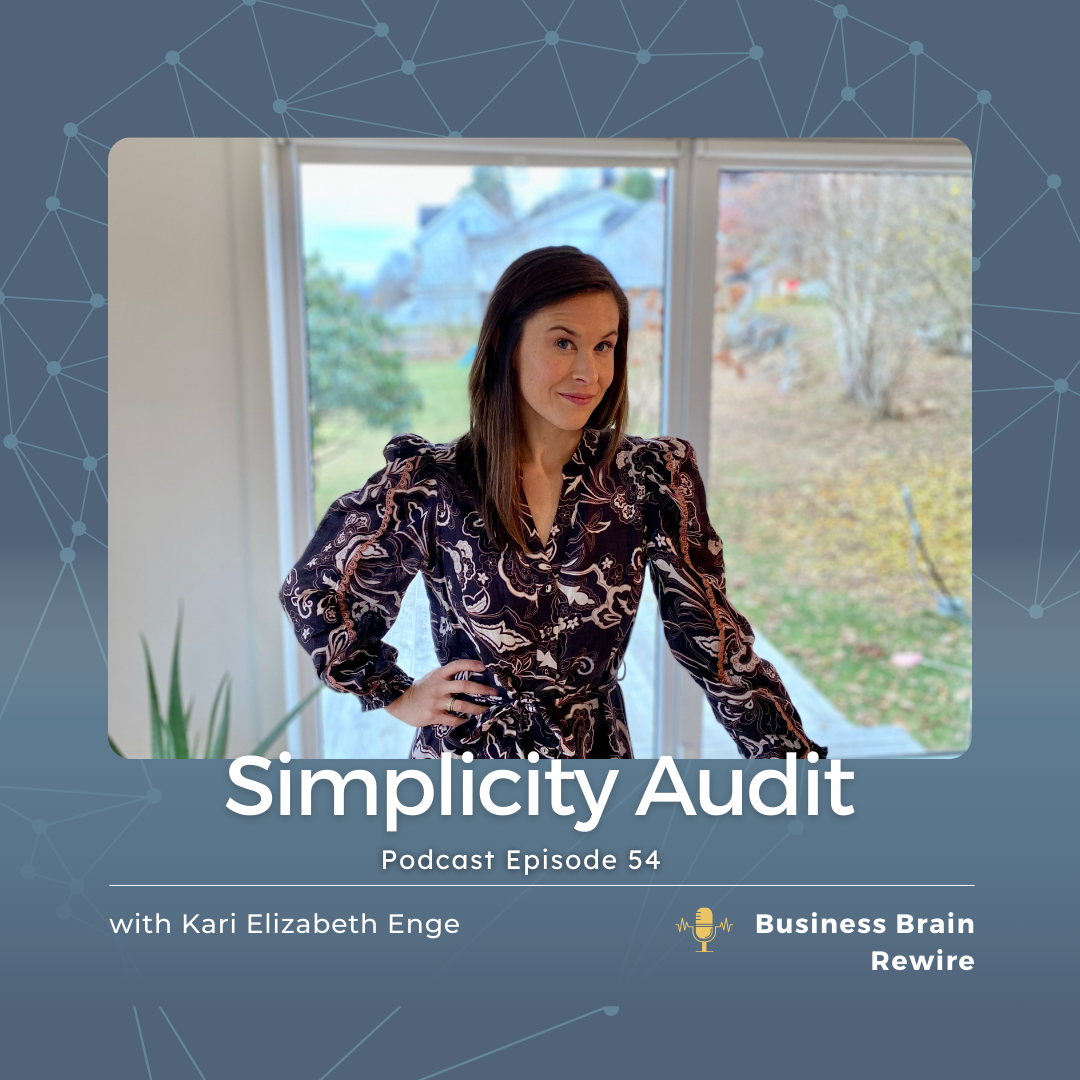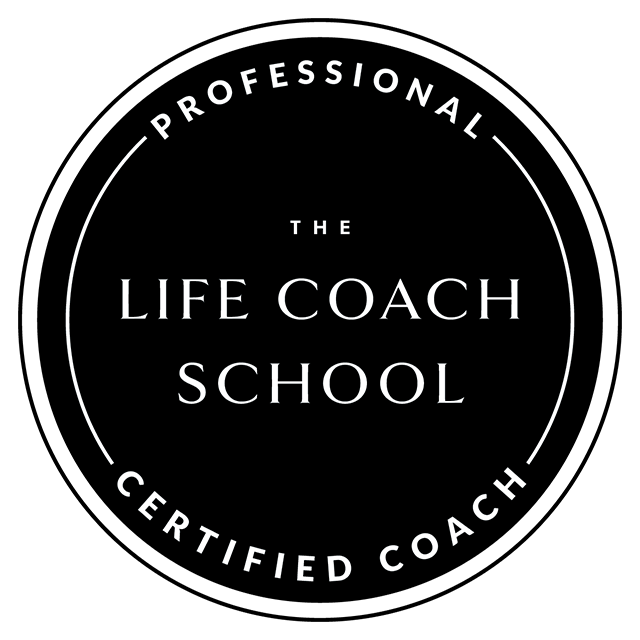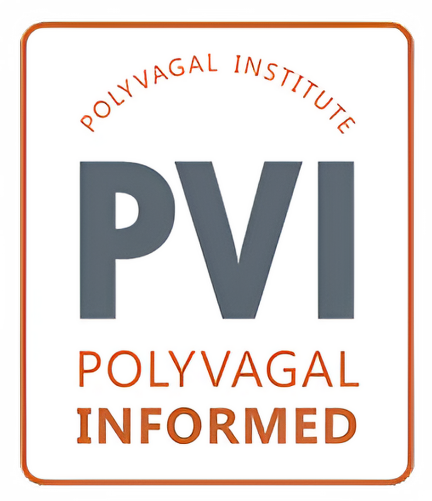Are you ready to make a more significant impact as an entrepreneur without succumbing to burnout? Traditional business strategies are not going to get you there.
Today, I’m diving into the power of Pareto’s Principle, an essential tool for purpose-driven founders seeking to optimize their efforts and achieve greater results.
Strategizing Using Pareto’s Principle for Purpose-Driven Founders
Pareto’s Principle, or the 80/20 rule, suggests that 80% of your results come from 20% of your efforts.
To effectively use Pareto’s Principle as a purpose-driven founder, identify the 20% of activities that yield 80% of your BEST outcomes. Not just any outcomes, but your BEST. This means the places you make the most income and impact with the least amount of stress. Another way to find your top 20% activities is to consider what you love doing and what brings you the most joy.
This approach allows you to focus on high-impact tasks, simplifying your business model and strategies.
It’s also crucial to remember that your business model should evolve as YOU grow. What works now might not be effective in the future. You should be adapting your strategies to ensure sustained success as you scale. This means that your top 20% now will not be your chosen top 20% activities or business model in the future. Often times, what is your 20% now, will become the 80% that you will drop in the future.
This process consists of testing, evaluating, and tweaking your 80/20, which is vital for long-term growth.
Tune in to today’s episode to get more specific advice for how to strategize using the 80/20 rule, perfect for any founder who wants to reach a new revenue goal or simplify their business model with less stress.
In This Episode, You’ll Learn:
- How to simplify and streamline your business model for maximum efficiency without losing your purpose or values
- How to find more joy in your business without hurting cash flow
- Specific examples of how to strategize using Pareto’s Principle
Mentioned in Today’s Episode:
Increase sales and lower stress using DBB’s proven CEO System by learning more about the Simply Sustainable coaching program for purpose-driven founders.
Transcript:
[00:00:00] Kari Elizabeth Enge: Hey founders. I hope you are having an amazing summer. We just got back from the states. We were visiting our family in Tennessee and we just had the best time on the lake. It was total chaos and so much fun. And now we are back here in Norway. You’ll have to excuse my scratchy voice today. I am just getting over a cold or something, but I really wanted to. Share today’s episode with you because I’ve had many conversations lately with coaching clients really rethinking their business models, rethinking their strategies. And there’s lots of reasons for this.
[00:00:44] Some of my clients have really been testing and tweaking and following my entrepreneurial cycle for the last year and have seen something bubbling up something working really well. And we’re leaning more into that. And other of my clients just have. Decided, you know what this business model that I decided on three years ago, I’ve outgrown it. I have realized through testing and tweaking that. My zone of genius and what I really love doing is not working in this particular way with this particular structure or this certain type of product or service. And so I’ve been having many great coaching conversations with clients, really just looking at their business, zooming out. And rethinking the entirety of it.
[00:01:34] And that’s one of the things I love doing with clients is helping them to take a business that just not quite working either it’s a business model. That’s not getting them to their goal or just doesn’t serve them anymore and helping them rework it. So today I thought I would share. One of the ways that I help clients to design business models and strategies that work really well.
[00:02:00] And to give you an insight into one of the core philosophies of what I teach. So we’re going to talk about something called Principal today.
[00:02:10] And I’m going to go into detail on how you can actually use it in your business, because I think that a lot of people have heard it, but they’re not actually using it to make decisions and to strategize. So to get this party started. Let’s first talk about what the heck Pareto is principal is. Pereto’s principle is also known as the 80 20 rule. And that’s probably the term that you’re most familiar with. And this is a concept that suggests that roughly 80%. Of your results come from about 20% of what you’re doing.
[00:02:47] This is a principle that is named after an Italian economist named Vilfredo Pareto. And he observed in, I think the early 20th century or something that
[00:03:00] 80% of the land in Italy was owned by 20% of the population. And as he started to dive into this 80 20 rule, he found that it applied to all sorts of areas, productivity, time management, quality control, and of course, wealth distribution around the planet. So obviously there is this imbalance between what are the inputs and what are the outputs. And this can really help you to get more strategic,
[00:03:28] Because if the amount of effort you put in is not always going to bring the same amount of output back out. And that distribution is really uneven, then it begs the question. What should we be focusing on? What’s going to get me the biggest bang for my buck. What’s going to move the needle. With the least time, the least effort and the least amount of complexity. That I often say as a business coach complexity is the death of your business, right?
[00:04:00] So we want to lean into what are the most simplest strategies? What is the most. cost effective, most enjoyable business model and strategies for you that are gonna make the most impact in the world and bring in the most income. And we are going to use Pareto principle to figure that out. So when you sit down to make a big decision for your business, or even just a small tweak to your business strategies, You want to be having this Pareto principle in mind and always have this question. At front and center.
[00:04:38] Okay. I know that. 20% of what I’m doing is getting me 80% of my results that small 20% is giving me the biggest bang for my buck. And you want to be on the lookout to find it and lean into it. On the flip side. 80% of what you’re doing, right?
[00:05:00] All that effort is getting you a measly 20% of your results. And so one of the things you can do in your evaluations on a regular basis is really looking at that. 80, 20. Comparison so that you can get rid of that 80%.
[00:05:18] maximizing the 20%. So that’s the first thing that I really want you to keep in mind, right? Use Pareto principle to make decisions and strategize.
[00:05:30] Trust USB microphone-2: Now there is a little caveat that I think is really important for you to consider. Even if you are a brand new founder or an established founder, looking to scale your business. One of the things that comes up with new founders in coaching calls. Is there focus on finding the right business model and strategy almost as if they’re looking for the pot at the end of the rainbow, like they’re on a treasure hunt and they feel like once
[00:06:00] they found the winning formula that they’re set. I remember I had a founder. A while back here in Norway and she was trying to land a very strategic partnership. And an investor. And she was talking to this celebrity here in Norway. And this celebrity. Had a huge audience.
[00:06:24] She was a comedian. She had just a massive network. And so my client was going to reach out to her and pitch her on, okay. Come become an investor and become a strategic partner. So that we can. You can help me grow that my company. And so I obviously helped her to get in touch with this person and to land this person and to get a really good. Agreement and a contract put into place. And I remember she sent me a text message and she was like, we are set.
[00:06:57] Like we are gold. And I just [00:07:00] smiled and I kept it to myself. Of course, I brought it up later of Hey, do you see how you are just putting all of your eggs in this basket? Thinking that this strategy is like going to just set you up for life. And I really had to educate her on, yes, this is a very strategic. Partnership.
[00:07:21] This is a big win. This is going to really help to solidify your space in the industry. However, your business model is going to be very dynamic and it’s going to need to change as you scale, what has gotten you to this point that you’re at in your company is not going to get you where you’re going. So oftentimes what we start with that kind of a minimal viable product version of the business model. Is not what is going to get you to that ultimate goal. In fact, it won’t. You’re going to have to burn the building down and
[00:08:00] rebuild it. To get to that next level of scale, right? The entire operation has to change the product mix has to change like how you’re doing things just completely has to change.
[00:08:11] So what I want you to see with that little example? Of the celebrity is that we want to make sure that you are keeping in mind that this 80 20 rule is in constant motion.
[00:08:26] Trust USB microphone-2: you might decide, okay, I’m going to get rid of these 80% of things that I’m doing, that aren’t working and I’m going to lean into these 20%. And then you’re going to do that for a particular period of time. And then when you’re ready to meet your next goal, you’re going to have to burn it down. And get rid of the new 80%.
[00:08:46] That’s not working. And lean into a new 20%. So it’s like an ever evolving process. And what I think is really encouraging about this is that it takes the pressure off
[00:09:00] of finding the forever right answer. You’re never looking for the pot at the end of the rainbow. You’re always just testing, tweaking, evaluating, and adjusting forever and ever.
[00:09:11] So once you’ve decided, all right, I’m going to follow protos principle. When I evaluate and make decisions, I’m going to be on the lookout for that 80 20 rule combination.
[00:09:23] Trust USB microphone-3: I want you to approach it and a very particular way. So how I do it with my clients is. I really helped them to zoom out. And focus on. Something that’s really counterintuitive. at first, which is what do you love doing? So as the founder, We want to look at what is your unique contribution?
[00:09:48] Like what is that unique talent and gift that you possess? What do you love doing? What do you lose time in and what can not be easily replicated [00:10:00] by another person? This is your personal 20%, right? It is how you get the biggest bang for your buck inside of your company. You also want to do this for any team members that you have to really look at.
[00:10:17] Hey, what do they love doing? You’re going to have to ask them don’t guess. And what do they think is their unique talent and gift and contribution that they feel like it cannot be replicated by any other person. What is the strategies or what is the part of our business model?
[00:10:37] That’s getting us the biggest bang for our buck, because you really want to balance these two things out. What you don’t want to do is just look at your company and say, okay, here’s the 20% of what we’re doing. Let’s just drop everything else and move toward that.
[00:10:52] Because many times what you can do is you will isolate this principle and you’ll end up with a
[00:11:00] company you really hate. When I was helping a client go through this conversation. One of the things that we asked her is okay what is getting you? 80% of your revenue. So what we could have done is say, okay, let’s just lean into those small amount of sales activities that are producing the most client. However this client of mine, she was like, wait a minute. I don’t even want to work one-on-one with clients anymore. I don’t think that’s what I love doing.
[00:11:34] I don’t lose time in this client kind of client work. And I’m getting stuck in the busy work, which is not my unique talent. So we don’t want to just jump straight into what’s the most revenue generating sales activity. And just maximize that because we want to look at your business model in terms of. What is the impact you want to create?
[00:11:59] [00:12:00] And what do you want to do inside of your business? What do you love doing? And what is your unique talent? What is your unique gift? So that’s why I like to start with this personal approach to check in with you, the founder, the CEO. What kind of activities do you want to be doing? Now you’re not always going to be able to spend your time. A hundred percent in your zone of genius, a hundred percent in just what you love to be doing all the time.
[00:12:29] So don’t misunderstand me that I’m just saying drop all the admin, drop all the sales and just live in LA land. Having a hobby who we really need to maximize cashflow, but I think it’s a really good question for you to answer before you dive into what are the strategies that are really producing the most results. This is a very nuanced conversation, but I think that these two questions are a great place to start.
[00:12:58] So just to [00:13:00] recap that you want to, first of all, Ask yourself, the question, what do I love doing? What is my unique gift and what kind of structure would I like this business model to have? In an ideal scenario that I know is going to get the biggest bang for my buck for your customer. Then you can look at our right, how do we adjust this strategy so that we get more ROI by only 20% of those maybe sales and marketing activities.
[00:13:31] All right. So you’re gonna play around with this combination. find a unique formula that works for you. Take the pressure off, because as I mentioned before, this is not something that is a forever decision. We make a decision with the information we have. We move forward with the most simplest way to execute it. And we see what happens.
[00:13:58] We test, [00:14:00] then we evaluate and then we tweak, and that is our forever dynamic process. As you grow your company. one of the things that you can do. Is play around with your goal timeline, right? Because oftentimes a timeline will help take the pressure off. And to help you really test and tweak, right?
[00:14:23] So for example, for a new company, Maybe trying to figure out the ideal business model for the next five years is getting them into a lot of confusion and complexity. So we can reduce the timeline. To really focus on. Okay. What do we think is going to generate the cashflow that’s really strategic for you over the next three months?
[00:14:45] Like what is the 20% that we want to lean into? To produce the 80% of that cashflow. And then, alright, now that we’ve gotten rid of a lot of clutter, right? In the business model, what’s the 20% [00:15:00] of the tasks you love doing that are reaching you or helping you to get to that bigger goal that you can bring into your calendar as well.
[00:15:09] So you might be spending 20% of your time on. Maximizing the cashflow and then another 20% of your time. Working toward that ideal business model, right?
[00:15:19] So now you’re at about 40% of your time. Do you get how this works? So it’s not just your short term goal or your longterm goal. You can split your calendar. So that you’re working on both short-term cashflow and that ideal business model that you are growing into.
[00:15:39] I hope that this episode has given you something to think about something to chew on. When it comes to making decisions and strategizing. In your business.
[00:15:51] Trust USB microphone-4: This is a big part of what we teach and help founders with inside of the simply sustainable program. [00:16:00] It’s all about helping you get 80% more results with only 20% of what you’re doing to release simplify. So you can reach that next revenue goal with a lot less stress. So you have more space for personal life and wellbeing and just opened capacity to make a bigger impact in your business.
[00:16:18] Trust USB microphone-5: Have a wonderful week serving the world, making sales and making time for self care. Take care.
